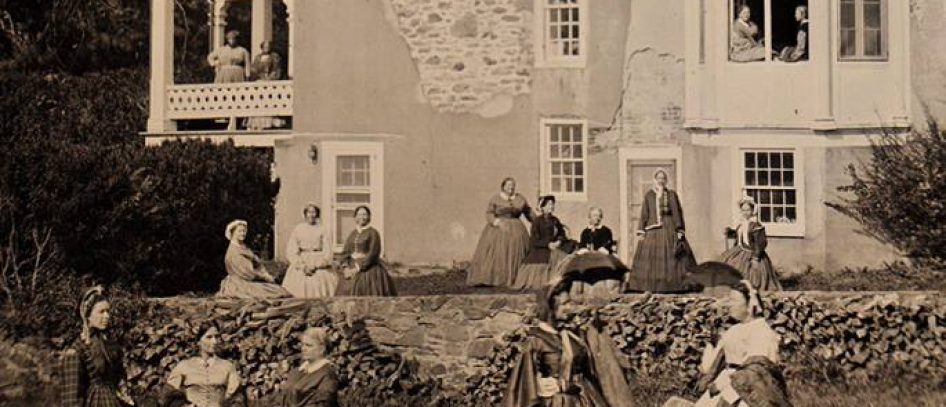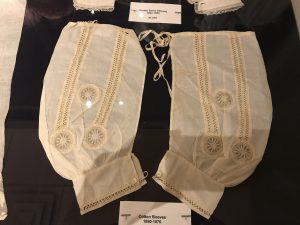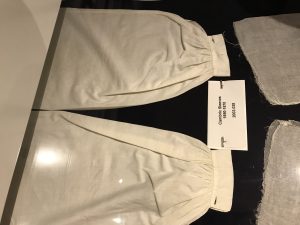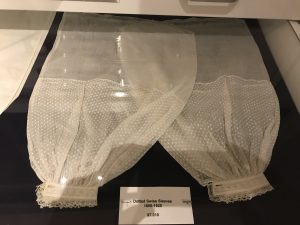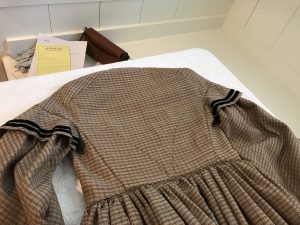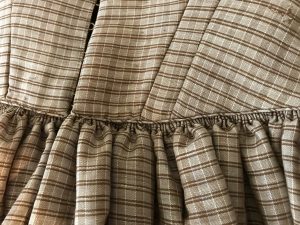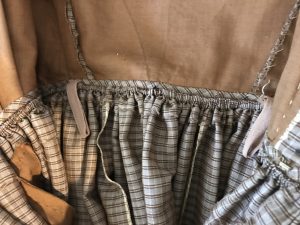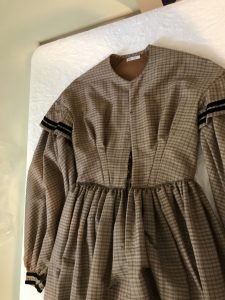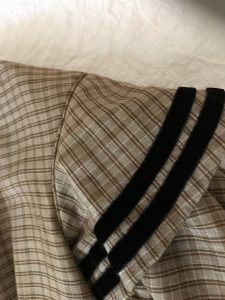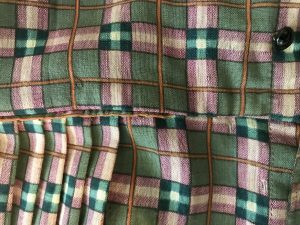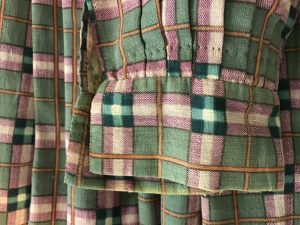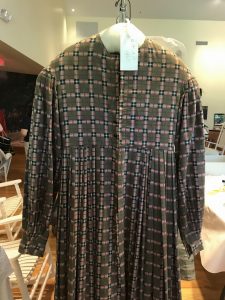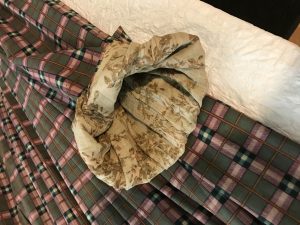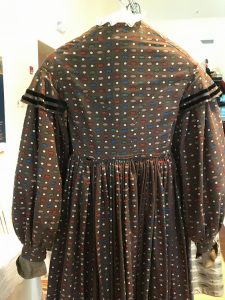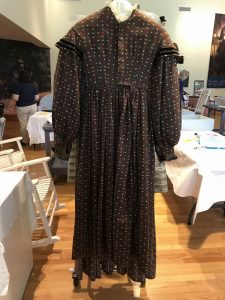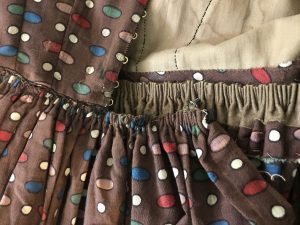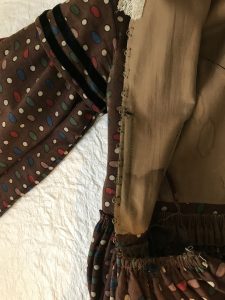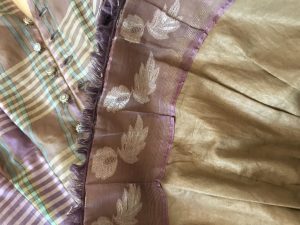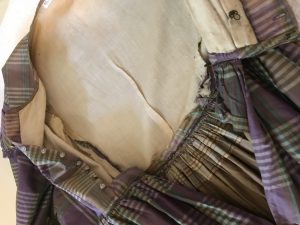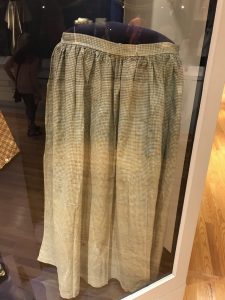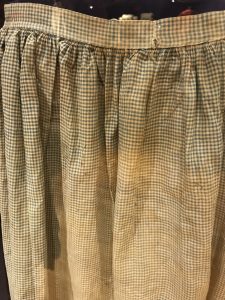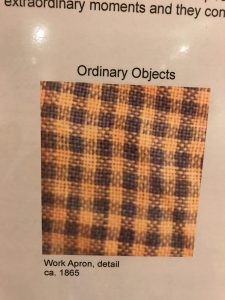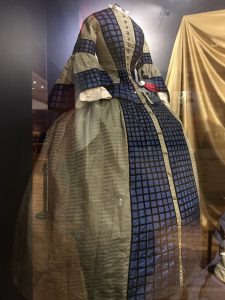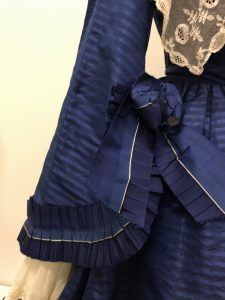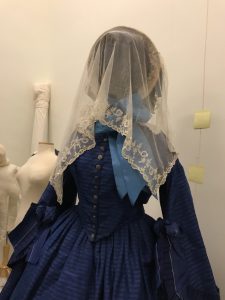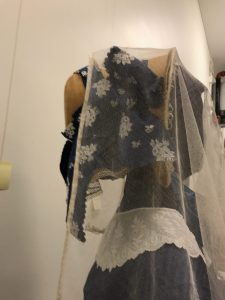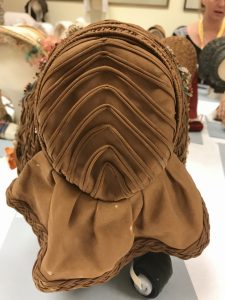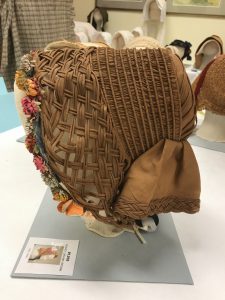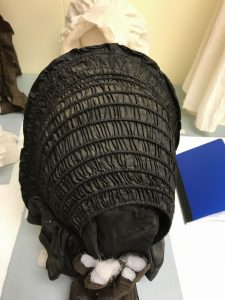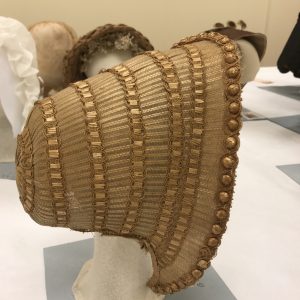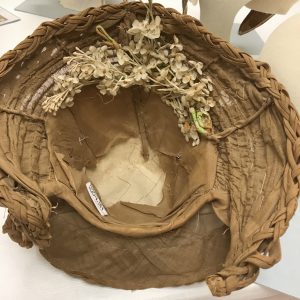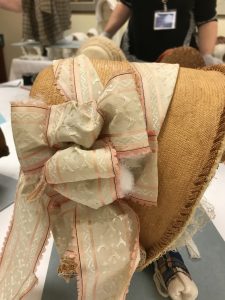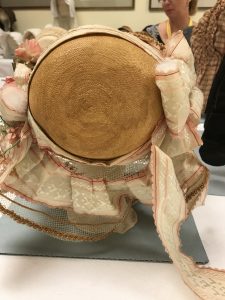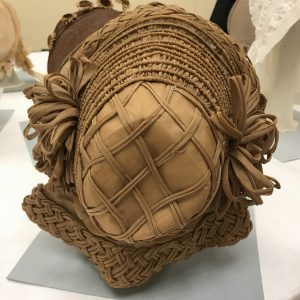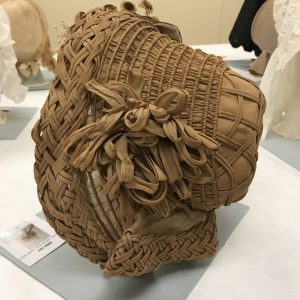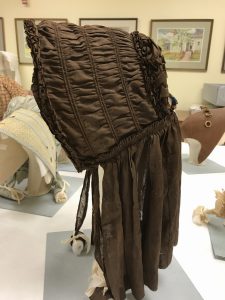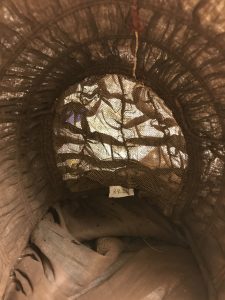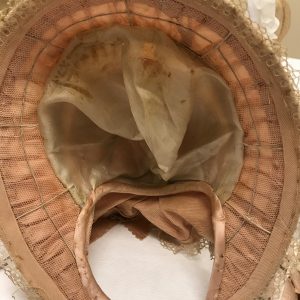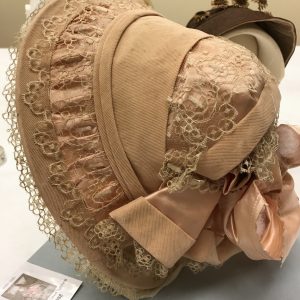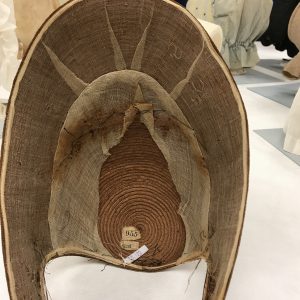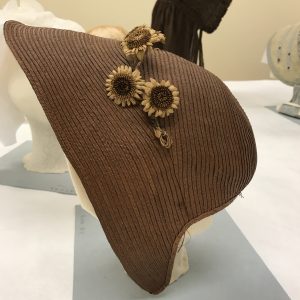While at the ALHFAM annual meeting in New York, I visited the Susan Greene Costume Collection at Genesee Country Village and Museum. This was not just a look at exhibits; this was a tour of the vaults, picking out what we wanted a closer look at and then a hands on independent study of the items. Not all the pieces in these photos are from the Greene collection. Permission to post my photos was giving by Patricia Tice, Curator, John L. Wehle Gallery at GCVM. Just a few notes on the garments I got up close to.
Per description with dress:cotton/Alpaca wool with black velvet trim. 1858-1865. Entirely hand stitched. Bishop sleeves with jockeys. Front hook and eye closure with slightly pointed bodice, piped edge. Observation: From Sleeves are fully lined. Skirt is cartridge pleated, 37.5 inches long in the front, 40 inches long in the back with 132 inches circumference. No pocket. Hem guard is pinked at the top and 5.5 inches deep. Wool hem braid. Fabric panels are 22 inches wide. Bodice is darted and darts are boned. One piece back, but stitched to appear as three.
This next dress is something of a mystery. The records from the collection identify it as a maternity or work dress from 1865. It is extremely short waisted and of wool. Skirt is pleated and there is piping at the waist but it does not meet in the front, meaning there is about two inches along the front panels that have no piping. There is a long pocket. The bodice has no shaping, no darts or curved back. The bishop sleeves are fully lined in calico. The armsyce is piped and the sleeves pleated in. The hem guard is folded at the top and stitched down and is 7.5 inches deep, with hem braid. Fabric panels are 22 inches wide. Hook and eye front closure. The skirt front length is 47 inches long!! But it does appear to have been taken up with a pleat of about four inches and then let down.
Brown wool, cartridge pleated skirt, circumference of 158 inches. Hem guard 8.5 inches deep with hem tape. Pocket in side seam. Skirt panels are 22 inches wide not including seam allowance. Top of skirt folded over three inches and where folded lined approximately two inches. Raw edges of top overcast. Fully lined bishop sleeves with 4.5 inch jockeys and turn back cuffs. Thread eyes on cuffs. Hook and eye front closure. Piping at waist, neck, and armsyce. Bodice is darted, with boning in only the outside dart. One piece back made to appear as three.
From the description with the dress: Lavender plaid silk with buttons. Entirely hand stitched black, white, lavender, pale yellow, green plaid silk taffeta. Round waist, boned darts, high round neckline. Front opening; tiny rimmed glass buttons and bottonholes to within three inches of neckline. Dropped piped armsyces with split jockeys; slightly flaring sleeves to elbow ending in slightly gathered bias “pagoda”, bottoms faced with violet silk gauze. Observation: Skirt is 159 inches in circumference, fully lined. Pocket. Piping also at waist and neck. Skirt top folded over approximately three inches. One piece back. Sleeves lined with decorative fabric at the inside edge. Back lining has a single dart down the middle.
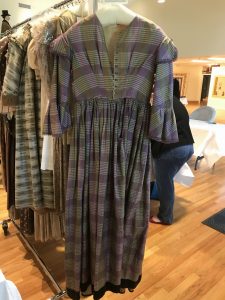
This apron was in a display case with the following description: Apron, ca; 1860. General stores frequently listed sales of “apron check”. But while fancy silk aprons (worn in the parlor) survive, utilitarian work aprons (worn in the kitchen) seldom escaped the rag bag.
Observed: Plaid trim applied on top of dress fabric. Skirt is pleated to the front. Skirt circumference approximately 160 inches, with a pocket. Top of skirt turned over approximately two inches. No hem braid or hem guard. Dog leg extension to waist band is pieced and approximately 3.5 inches long. Bodice is pleated front and back, with pleats pointing toward the center. Lining and fabric are pleated as one. One piece back. No piping at waist; however, there is piping at the armsyces and neck and is approximately 1 millimeter wide. Shoulder trim is applied before the bishop sleeves are placed. Sleeves are pleated into armsyces with pleats toward the top. Also pleated into the cuffs. Sleeves are fully lines. Front closure with buttons only.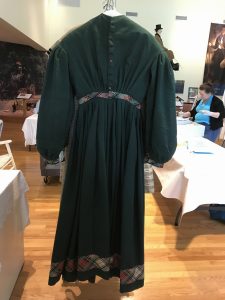
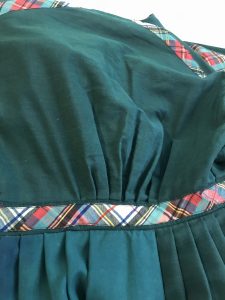
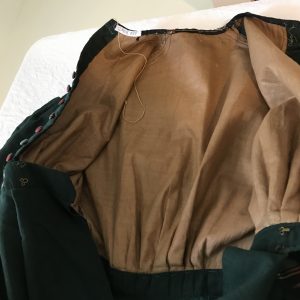
Wedding dress, 1857.
Black drawn bonnet 1855-1860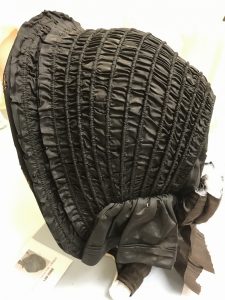
Pink/white ribbons 1855-1856
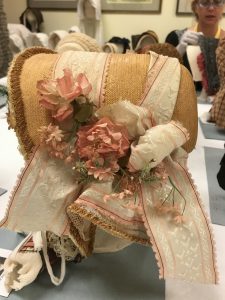
Beige bias tape, 1860
Girl’s drawn sunbonnet 1855. On wire, soft back, curtain 11 inches.
Pink ribbon, white lace, 1850-1860
Straw spoon, 1860
Categories: Civil War
